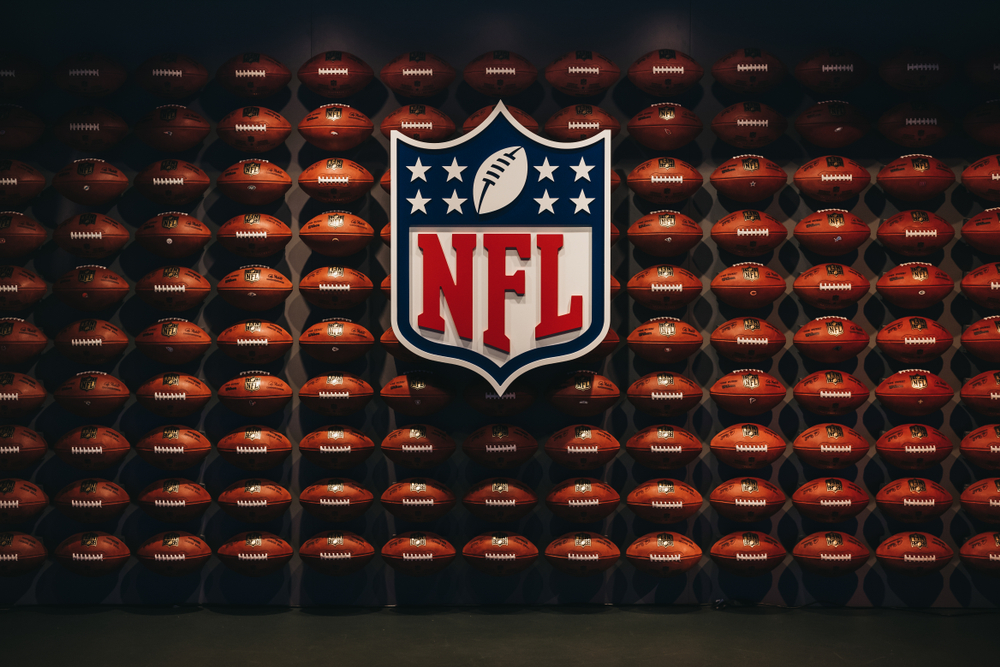Understanding the rules and terminology of the National Football League (NFL) is essential for both the seasoned fan and newcomers to the game. At its core, the NFL is a professional American football league, known for its intricate play strategies, complex rulebook, and unique jargon. Each game unfolds with a set of rules that govern gameplay, player conduct, and team strategy, ensuring fair play and the integrity of the sport.
Familiarity with terms such as “downs,” “punts,” and “field goals” is just as important as knowing the broader rules of the game. These terms describe the actions players take on the field, and they play a crucial role in the execution of each play. The terminology also extends to positions and formations that dictate the roles of players and the setup of teams on the gridiron. For those looking to enhance their knowledge, detailed explanations of the game’s fundamental terms can be found through resources such as the NFL Football Operations glossary.
To truly appreciate the nuances of the game, one must delve into the NFL Rulebook, which outlines all the playing regulations. This rulebook is designed to maintain consistency and clarity in the game’s conduct. Meanwhile, those unacquainted with the sport may benefit from resources aimed at beginners, which break down the basics of the game into more approachable content, such as the Rookie’s Guide provided by NFL Football Operations.
Game Structure
The structure of an NFL game is meticulously defined, with specific rules governing the timing of play, management of the clock, methods of scoring, and resolution of ties in overtime. Understanding these elements is key to appreciating the strategic depth of the game.
Quarters and Halftime
An NFL game is divided into four 15-minute quarters, separated by a 12-minute halftime after the second quarter. Each quarter must have a two-minute warning at the end, which acts as a courtesy timing reminder to both teams.
Play Clock Management
The play clock is set to 40 seconds, starting at the end of the previous play, within which the offensive team must snap the ball for the next play. A delay of game penalty is called if the clock expires. There’s also a 25-second play clock that’s used after certain stoppages in play and at the start of each half or overtime.
Scoring Plays and Calculations
Scoring in the NFL includes touchdowns worth six points, with the option for a one-point conversion (by kicking the ball through the goalposts) or a two-point conversion (by executing another play from the two-yard line). Field goals are worth three points, and safeties award two points to the defensive team.
Overtime Rules
Regular season games tied at the end of regulation go into a 10-minute overtime period. The first team to score a touchdown, or a safety, wins the game. If the team that possesses the ball first only scores a field goal, the opposing team has an opportunity to score. If the score remains tied after overtime, the game ends in a draw. However, in the playoffs, the teams will continue to play additional overtime periods until a winner is determined.
Player Positions
In the National Football League (NFL), each player’s position is determined by their role on the team and dictates their responsibilities during the game.
Offensive Positions
Quarterback (QB): The leader of the offense who throws passes, calls plays, and reads the defense.
Running Back (RB): A versatile player who runs with the ball, catches passes, and blocks.
Wide Receiver (WR): They specialize in catching passes and are known for their speed and agility.
Tight End (TE): Positioned beside the offensive linemen, the tight end serves as both a blocker and a pass receiver.
Offensive Linemen (OL): Comprising the Center (C), Guards (G), and Tackles (T), these players protect the quarterback and open paths for running backs.
Defensive Positions
Defensive Linemen (DL): Their primary role is to rush the passer and stop the run, including Defensive Ends (DE) and Defensive Tackles (DT).
Linebackers (LB): Positioned behind the defensive line, linebackers defend against the pass, rush the quarterback, and stop runners.
Cornerbacks (CB): Tasked with covering wide receivers, they play on the edges of the defensive formation.
Safeties (S): Including Free Safety (FS) and Strong Safety (SS), they defend against long passes and support defense against runs.
Special Teams
Kicker (K): Responsible for field goals and kickoffs, precision and power are key attributes.
Punter (P): Their main role is to kick the ball away after a failed offensive drive, aiming for distance and placement.
Return Specialists (RS): They are the returners on kickoffs and punts, focusing on gaining as much yardage as possible.
Long Snapper (LS): A specialized center who snaps the ball for punts, field goals, and extra points.
On-Field Regulations
The “On-Field Regulations” in the NFL encompass the structured rules of play designed to maintain fairness and order during a football game. These regulations manage everything from the position of players before the snap to the ways in which games are reviewed for accuracy and fairness.
Line of Scrimmage Rules
The line of scrimmage is the starting point for offensive plays. The offense must have at least seven players lined up on the line of scrimmage, and all players must be set in their position for at least one second before the ball is snapped. Special rules apply to the linemen and backfield players in terms of movement prior to the snap, which can result in penalties if violated. The NFL Rulebook outlines in detail the standards for player positions and movements relative to the line of scrimmage.
Penalties and Enforcement
Penalties in the NFL are wide-ranging and can be assessed for various infractions including holding, offsides, and pass interference. They are often accompanied by yardage losses or gains depending on the nature of the violation. The enforcement of these penalties is crucial and can dramatically shift the momentum of the game. Each penalty type comes with its predetermined yardage enforcement, which can be reviewed in the Official Playing Rules.
Instant Replay Reviews
Instant replay reviews empower officials to ensure the accuracy of on-field calls. Coaches have the ability to challenge certain plays, with the number of allowed challenges depending on previous success rates of challenges. Reviewable aspects include possession during a catch, boundary plays, and scoring plays, among others. There are strict guidelines which govern what can and cannot be reviewed, including a list of specific reviewable plays and the criteria that must be met for a review to be initiated.
Equipment and Uniform
When it comes to the National Football League (NFL), player equipment and uniform regulations are both specific and strictly enforced to ensure safety, uniformity, and commercial considerations.
Player Equipment
Players in the NFL are required to wear a standard set of equipment to protect themselves during the game. This set typically includes:
- Helmet: Crucial for protecting against head injuries, with a face mask and chin strap.
- Shoulder Pads: To absorb shocks and hits to the upper body.
- Mouthguard: Reduces the risk of dental injuries and concussions.
- Thigh and Knee Pads: Cushion impacts to the legs.
- Gloves: Optional for better grip, especially for receivers.
Detailed safety standards for NFL player equipment ensure that all gear meets stringent criteria before being approved for on-field use.
Uniform Regulations
The uniform in the NFL serves to identify players and align with team branding while following league stipulations:
- Jersey: Must display numbers on the front and back which align with NFL rules for visibility and team color schemes.
- Pants: Need to be a specific length and include mandatory thigh and knee pads.
- Socks: Should conform to team colors and be worn in a standardized manner.
- Shoes: Players often have a choice, but must adhere to team color guidelines.
The uniform also includes strict guidelines for logos and sponsorship, maintaining a balance between team identity and commercial interests. Uniform inspections before games ensure that all uniforms and equipment conform to NFL standards, making sure players do not wear apparel that may cause confusion or give an unfair advantage.
Officiating
In the National Football League (NFL), officiating is essential to maintain the integrity and flow of the game. Officials are tasked with enforcing rules, overseeing fair play, and ensuring that each contest is played within the bounds of sportsmanship.
Referee Responsibilities
The referee is the head official on the field. They have the final say in all decisions and are responsible for the general supervision of the game. The referee’s duties include announcing penalties, overseeing the coin toss, and confirming scores. Additionally, they are the official who signals the commencement and ending of each play.
Official Signals
During a game, NFL officials use a system of hand signals to communicate their calls to players, coaches, and spectators. Each signal is precise and distinct for clarity. For instance, a touchdown is indicated when the referee raises both arms straight above their head. An in-depth understanding of these gestures helps one to follow the game more closely. For more on hand signals, referring to the Guide to the Officials’ Signals can be beneficial.
Gameplay Fundamentals
The fundamentals of NFL gameplay are anchored in a few key components: the Down System, scoring through Field Goals and Extra Points, and initiating play with Kickoffs and Punts.
Down System
In the NFL, the offensive team has four downs, or chances, to advance the ball 10 yards. If they succeed, they are awarded a new set of four downs. This system is crucial as it defines the team’s strategy, whether they sharpen their offensive plays or focus on defense.
- First Down: The initial play in a series, with the offense having four downs to move the ball.
- Second, Third, and Fourth Down: These are subsequent attempts that follow if the offense fails to achieve a First Down on the preceding play.
Field Goals and Extra Points
After a touchdown, a team may attempt to kick a Field Goal for an extra point or execute a two-point conversion play. Separate from touchdowns, a Field Goal can also be attempted from anywhere on the field during a play and is worth three points if it passes between the upright goal posts.
- Extra Point: Worth one point, kicked from the 15-yard line.
- Field Goal: Worth three points, kicked during general play or after a touchdown.
Kickoffs and Punts
Kickoffs occur at the start of each half and after scoring plays, where the ball is kicked from the kicking team’s 35-yard line. Punts are used to transfer the ball to the opponent when a team is unable to achieve a First Down after the third attempt and decides against a risky fourth-down play.
- Kickoff: A method of commencing play or resuming play after a score where the ball is kicked from a tee.
- Punt: A strategic kick used on the fourth down, if a team is not in a position to attempt a score or a first down, to push the receiving team back and regain a defensive advantage.
Frequently Asked Questions
Understanding the NFL’s intricacies can be challenging. These subsections aim to clarify some of the most common queries related to NFL rules and terminology.
What are the key changes in NFL rules for the 2023 season?
The NFL has implemented new rules for the 2023 season to enhance player safety and game dynamics. One of these changes includes modifications to the kickoff formation to reduce high-speed collisions.
How can a beginner understand the basic rules of NFL football?
Beginners can start by exploring resources like NFL Football Operations, which provide clear explanations of gameplay, player positions, and scoring, as well as the NFL 101 Guide to get familiar with the basic structure of the game.
What are some common penalties and actions prohibited to NFL players during a game?
Common penalties include holding, offside, and pass interference. Actions such as concealing the ball underneath the uniform or using equipment to simulate a ball are explicitly prohibited.
Could you explain some of the most critical football terms used in NFL games?
Critical terms include ‘Downs’ for plays, ‘Touchdown’ for scoring six points, and ‘Interception’ for a defensive player catching an offensive pass. Understanding these terms is crucial for following the game.
Where can one obtain a PDF version of the most recent NFL rule book?
A PDF version of the latest NFL rule book can be downloaded from the official NFL Football Operations website, ensuring fans and players have access to the most up-to-date information.
What are some examples of football slang and how are they used in NFL context?
Slang such as “Hail Mary” for a desperate long pass or “Pigskin” for the football itself adds color to NFL commentary. They are often used in game analyses and play-by-play descriptions to provide a more vibrant understanding of the action.



